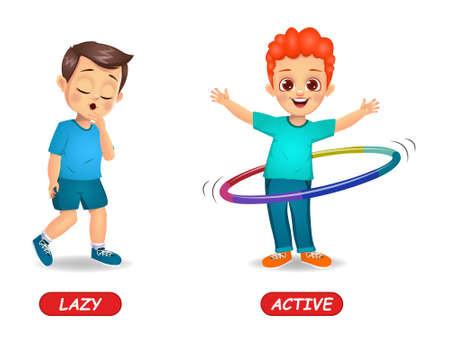1. Understanding Feng Shui and Its Relevance in Modern Family Life
Feng Shui, an ancient Chinese practice, is all about creating harmony between people and their living spaces. In recent years, more American families are exploring how Feng Shui can positively impact their homes—especially when it comes to supporting children’s growth, happiness, and academic success. But what exactly is Feng Shui, and why does it matter for families today?
What Is Feng Shui?
At its core, Feng Shui focuses on arranging your environment to promote the smooth flow of energy, known as “chi.” The belief is that when energy flows freely, it brings balance and positive outcomes to everyone in the home. While some traditional elements may seem unfamiliar, modern Feng Shui adapts easily to American lifestyles and decor.
Main Principles of Feng Shui in American Homes
| Principle | How It Applies at Home |
|---|---|
| Balance of Elements | Use a mix of wood, water, metal, earth, and fire in décor for harmony. |
| Clutter-Free Spaces | Keep children’s rooms tidy for clear thinking and reduced stress. |
| Personalized Spaces | Arrange study areas based on your child’s needs and preferences. |
| Natural Light & Airflow | Encourage windows open for fresh air and sunlight in learning zones. |
| Kua Number Guidance | Align desks or beds according to your child’s Kua number for better focus. |
Why Is Feng Shui Gaining Popularity Among American Families?
Parents across the United States are increasingly interested in holistic approaches that nurture both the mind and body. With growing attention on children’s well-being and academic performance, Feng Shui offers practical steps—like optimizing room layouts or using calming colors—that can make a real difference. Its flexibility allows families to keep their personal style while adding mindful touches aimed at helping kids thrive at home and school.
2. What is a Personal Kua Number?
In Feng Shui, the personal Kua number is like your energetic fingerprint. It helps reveal which directions are most supportive for you or your child in different aspects of life, including academic performance, health, and relationships. By understanding your child’s Kua number, you can create a home and study space that encourages learning and growth.
How to Calculate Your Child’s Personal Kua Number
Calculating the Kua number is easy and only requires your child’s birth year and gender. Here’s a simple step-by-step guide:
Step-by-Step Calculation
- Write down your child’s birth year.
- Add the last two digits together. For example, if born in 2015: 1 + 5 = 6.
- If your child is a boy: Subtract the sum from 10 (for those born before 2000) or from 9 (for those born in 2000 or later).
- If your child is a girl: Add 5 (for those born before 2000) or add 6 (for those born in 2000 or later) to the sum. If the result is a double-digit number, add the digits together until you get a single digit.
Kua Number Calculation Table
| Gender | Born Before 2000 | Born In/After 2000 |
|---|---|---|
| Boys | 10 – (last two digits added) | 9 – (last two digits added) |
| Girls | (last two digits added) + 5 | (last two digits added) + 6 |
Example:
If your daughter was born in 2012:
Last two digits: 1 + 2 = 3
Born after 2000, so add 6: 3 + 6 = 9
Her Kua number is 9.
Why Does the Personal Kua Number Matter?
The personal Kua number is more than just a number—it helps you understand which directions bring out your childs best energy. Each Kua number corresponds to certain directions that are considered lucky or beneficial for studying, sleeping, or even making friends. By positioning your childs desk to face their best direction or arranging their bedroom according to their Kua, you’re helping set them up for success both academically and personally.

3. Optimizing Study Spaces According to Kua Number
Creating a supportive study environment at home can make a big difference in your child’s academic performance. In Feng Shui, the Kua number helps identify each person’s best directions for focus and success. Here’s how you can arrange your child’s study area based on their personal Kua number, with practical tips that fit typical American homes.
Understanding Your Child’s Kua Number
First, calculate your child’s Kua number using their birth year and gender. Each Kua number has lucky directions that help with concentration and learning. You can find many online calculators to help figure out the right number quickly.
Desk Direction Based on Kua Number
Once you know the Kua number, position your child’s desk so they face their best direction while studying. This is believed to enhance their focus and academic luck. Here’s a simple table to guide you:
| Kua Number | Best Study Direction |
|---|---|
| 1 | Southeast |
| 2 | Northeast |
| 3 | East |
| 4 | South |
| 6 | Northwest |
| 7 | West |
| 8 | Southwest |
| 9 | South |
If your home layout doesn’t allow for an exact alignment, try to get as close as possible—small adjustments still help!
Study Space Organization Tips for American Homes
Create a Dedicated Zone
If possible, set up a specific spot just for studying—whether it’s a corner in their bedroom, a space in the living room, or even part of the kitchen counter. Consistency helps reinforce good study habits.
Tidy Up and Minimize Clutter
A clean desk means fewer distractions. Use baskets or bins (which are easy to find at stores like Target or Walmart) to organize books, supplies, and papers. Encourage your child to tidy up after every study session.
Add Supportive Elements
You can use soft lighting, an ergonomic chair, and calming colors like light blue or green around the study area. Consider adding a small plant—succulents work well indoors and need little care.
Quick Checklist for an Effective Study Space:
- Desk faces the child’s best Kua direction if possible.
- Adequate natural or soft lighting (avoid harsh overhead lights).
- Comfortable seating with proper back support.
- No clutter—keep only essentials on the desk.
- A positive quote or artwork for motivation.
- A small plant for fresh energy.
Adjusting your child’s study space according to their Kua number is easy to do and can be tailored to fit any American home style—from apartments to suburban houses. These simple changes may help your child feel more focused and confident while they learn.
4. Incorporating Feng Shui in Everyday Routines
Making Feng Shui a Part of Family Life
Blending Feng Shui principles into your familys daily life doesnt have to be complicated or mystical. In fact, many Feng Shui practices can be adapted to fit seamlessly into the routines and traditions of American households. Here are some simple, practical ways you can help your children benefit from positive energy flow and enhance their academic success using their personal Kua number.
Simple Daily Habits for Good Energy
| Routine | Feng Shui Tip | Why It Works |
|---|---|---|
| Morning Wake-Up | Encourage your child to face their best direction (based on their Kua number) when getting out of bed. | This helps start the day with supportive energy, improving mood and focus. |
| Homework Time | Arrange the study desk so your child faces one of their lucky directions while studying. | Boosts concentration, memory, and motivation for learning. |
| Family Meals | Sit together at the dining table, facing each other’s auspicious directions when possible. | Enhances harmony, communication, and overall family support. |
| Bedtime Routine | Ensure your childs head points towards a good direction while sleeping. | Promotes restful sleep and helps with mental clarity the next day. |
Personalizing Spaces with American Flair
- Decorate with Meaningful Items: Use items that reflect your family’s interests—like sports memorabilia or favorite books—placed in key areas based on Kua directions. This adds personal value while supporting positive energy.
- Color Choices: Incorporate colors that align with your child’s element (from their Kua number) into bedding, backpacks, or school supplies. For example, blue for Water element, green for Wood element.
- Create a “Success Corner”: Dedicate a small part of your child’s room as a motivation zone, placing awards or inspirational quotes there according to their best direction. This becomes a daily visual reminder of their goals.
Making Feng Shui Fun for Kids
Get your children involved by letting them pick out decorations or rearrange their desks with you. Explain how these little changes are meant to help them do better in school and feel happier at home. By making Feng Shui interactive and relatable, it becomes a positive family activity rather than just another rule to follow.
5. Real-Life Stories and Resources for Parents
American Families Share Their Feng Shui Experiences
Many parents across the United States have discovered how Feng Shui, specifically using their childrens Personal Kua Number, can make a difference in academic success and overall well-being. Here are some real-life stories from families who have tried these methods at home:
The Johnson Family – Boosting Focus with Simple Changes
Sarah Johnson from Austin, Texas, noticed her 10-year-old son, Ethan, was easily distracted while studying. After learning about Feng Shui, she calculated Ethan’s Personal Kua Number and rearranged his desk so he faced his best direction for academic growth. Within weeks, Ethan reported feeling more focused and less stressed during homework time.
The Patel Family – Creating a Calm Study Space
In Chicago, the Patel family used their daughter Mia’s Kua Number to select calming colors and supportive décor for her study area. Mia said she felt more comfortable in her space and her grades improved steadily that semester.
The Smith Family – Better Sleep, Better Grades
Jennifer Smith from Seattle adjusted her teenage daughters bed placement according to her Kua Number. With better sleep quality and less anxiety, her daughter noticed higher energy levels and improved school performance.
Quick Reference: Kua Numbers and Academic Directions
| Kua Number | Best Study Direction | Recommended Colors |
|---|---|---|
| 1 | Southeast | Blue, Black |
| 2 | Northeast | Yellow, Beige |
| 3 | South | Green, Brown |
| 4 | North | Purple, Blue-Green |
| 6 | West | White, Silver |
| 7 | Northwest | Gold, Gray |
| 8 | Southwest | Pink, Earth Tones |
| 9 | East | Red, Orange |
Resources for Exploring Feng Shui Further
- Kua Number Calculators: Many online tools help you easily find your child’s Kua Number by entering their birth year and gender.
- Books for Beginners: “Feng Shui for Children’s Spaces” by Nancilee Wydra is a helpful introduction with practical tips tailored for American homes.
- Professional Consultations: Local Feng Shui experts can visit your home or offer virtual consultations to personalize your child’s study or bedroom setup.
- Community Groups: Search Facebook groups like “Feng Shui Families USA” to connect with other parents and share experiences.
- YouTube Tutorials: Channels such as “Practical Feng Shui USA” provide visual guides on arranging spaces for kids’ academic success.
Your Next Steps as a Parent
If you’re interested in trying Feng Shui for your child’s academic journey, start small—rearrange a desk or add a color that matches their Kua Number. Share your experiences with other parents or seek out resources to guide you along the way. Each family’s story is unique, but many have found real benefits by bringing these simple changes into their everyday lives.
